The BALDUR code:
Predicts temperature and density profiles in tokamaks using
theoretically derived transport models
input |
|
computes |
 |
 |
 |
Predictive simulations are carried out using the BALDUR 1-1/2-D transport code for L- and H-mode discharges in the Alcator C-Mod tokamak. The plasma densities in these C-Mod discharges (from 0.9 to 3.8·1020 m-3) are higher than the densities in other tokamaks that we have simulated. Three transport models are used in these simulations: the standard Multi-Mode model (MMM95), a new version of the Multi-Mode model (MMM99), and the Mixed-Bohm/gyro-Bohm (JET) model. It is found that the Bohm term dominates in the Mixed-Bohm/gyro-Bohm model, while the Multi-Mode models have gyro-Bohm scaling. The simulated density profiles are found to be systematically flatter than the experimental data. The calculated temperature and density profiles for each of the three models are found to match experimental data with an average rms deviation of 18% (normalized by the corresponding central experimental values).
DoE contracts DE-FG02-92-ER-54141 and DE-FC02-99ER54512.
Predicts temperature and density profiles in tokamaks using
theoretically derived transport models
input |
|
computes |
 |
 |
 |
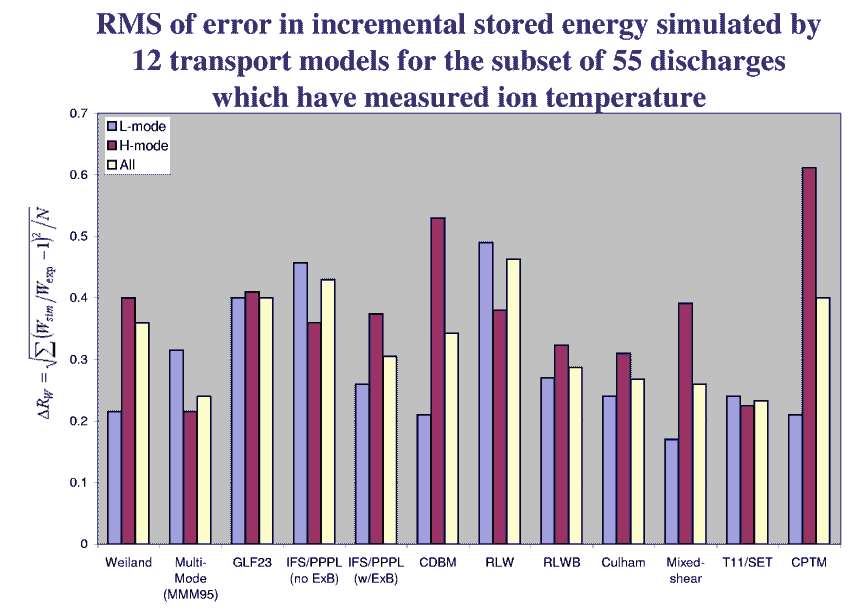
based on linearized fluid equations with magnetic drift for each particle spices
includes electromagnetic effects, electron-ion collisions, finite trapped electrons, impurities, and fast ions
diffusion matrix is computed as a derivative of the heat and particle fluxes, obtained in a quasilinear approximation, with respect to the temperature and density gradients; convective velocities are computed from the difference between the total fluxes and the diffusive fluxes
 |
 |
Bohm term: originally developed to fit JET data |
 |
gyro-Bohm term: required to fit discharges in smaller tokamaks | |
 |
neoclassical term: dominates ion thermal transport near the magnetic axis |
 ,
,
 ,
,
 ,
,

 ,
,

constants
 and
and 
are empirical parameters.
|
Typical Parameters
R=0.68 m |
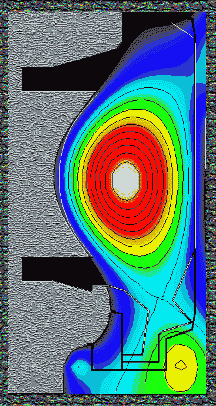
|
| C-MOD shot | 950407013 | 960229042 | 960126007 | 960301009 |
| R (m) | 0.673 | 0.673 | 0.673 | 0.672 |
| a (m) | 0.210 | 0.219 | 0.217 | 0.218 |
| k | 1.64 | 1.64 | 1.65 | 1.61 |
| d | 0.42 | 0.42 | 0.41 | 0.44 |
| BT (T) | 5.38 | 5.38 | 5.24 | 5.42 |
| IP (MA) | 1.01 | 1.00 | 0.80 | 0.83 |
| <ne>·1020 (m-3) | 1.52 | 1.82 | 0.93 | 1.50 |
| Zeff | 2.02 | 2.02 | 2.38 | 1.85 |
| dr*(0) (m) | 0.0094 | 0.010 | 0.0085 | 0.011 |
| Paux (MW) | 2.7 | 2.2 | 1.4 | 2.8 |
| C-MOD shot | 960116024 | 960116027 | 960214017 |
| R (m) | 0.676 | 0.676 | 0.677 |
| a (m) | 0.221 | 0.219 | 0.222 |
| k | 1.65 | 1.65 | 1.59 |
| d | 0.41 | 0.42 | 0.41 |
| BT (T) | 5.22 | 5.22 | 5.21 |
| IP (MA) | 1.01 | 1.02 | 1.02 |
| <ne>·1020 ( m-3) | 3.17 | 3.86 | 3.36 |
| Zeff | 2.40 | 1.41 | 1.49 |
| dr*(0) (m) | 0.0099 | 0.0096 | 0.0092 |
| Paux (MW) | 2.35 | 2.7 | 2.5 |
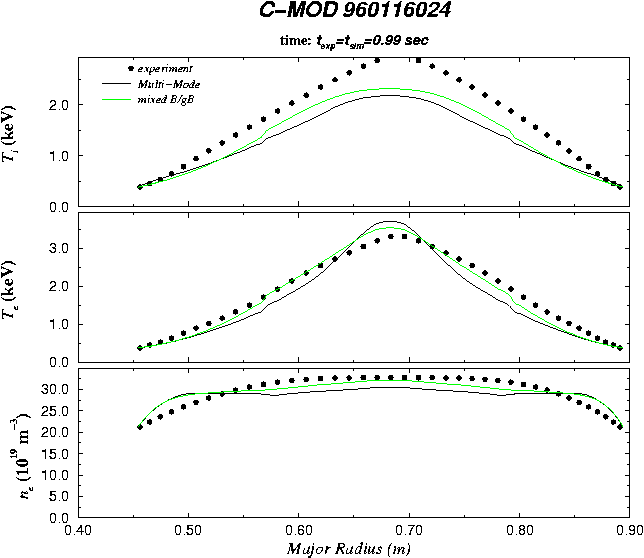
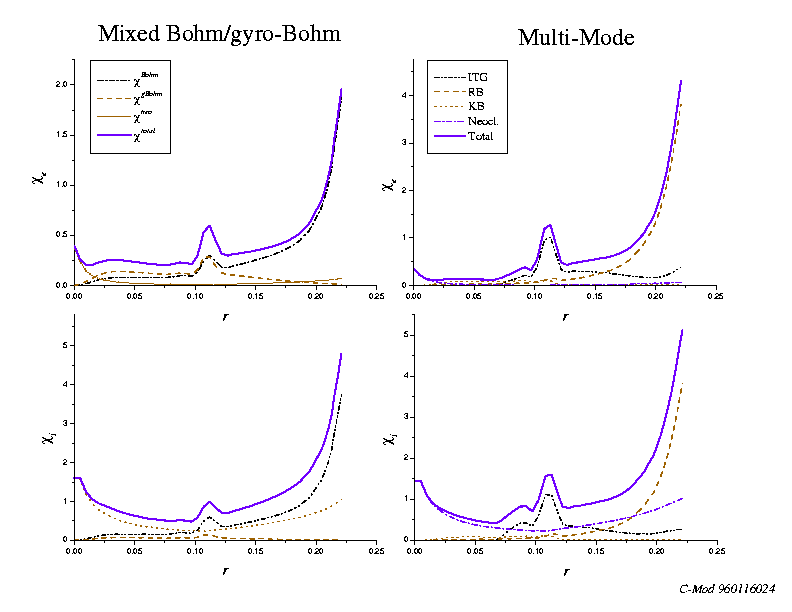
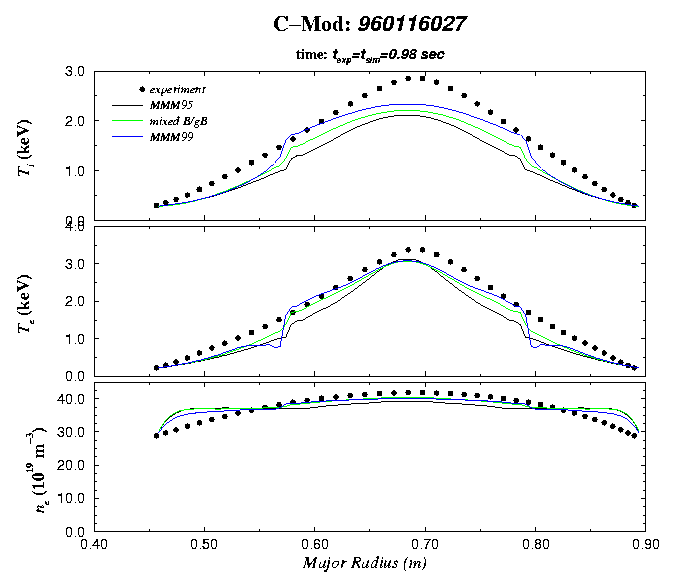
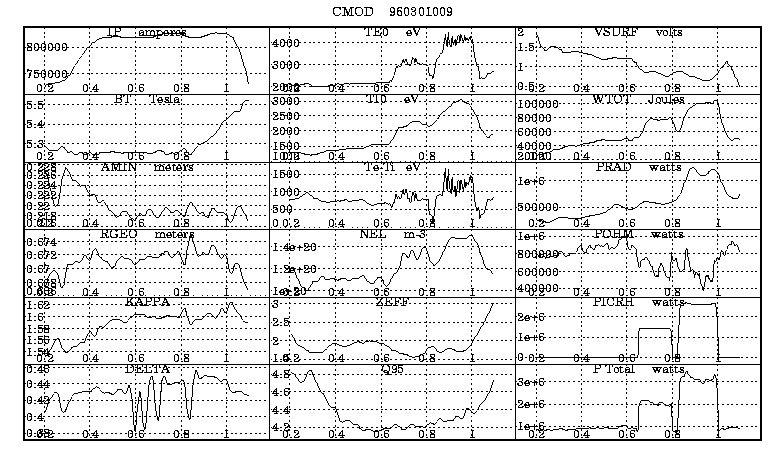
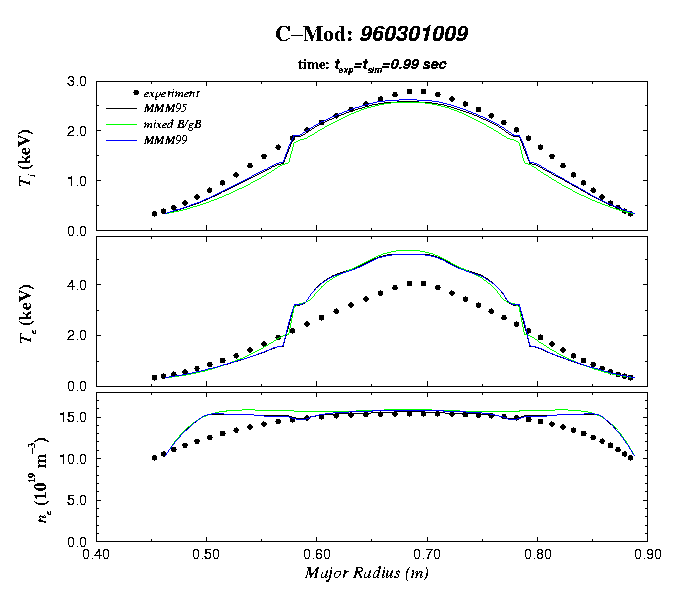
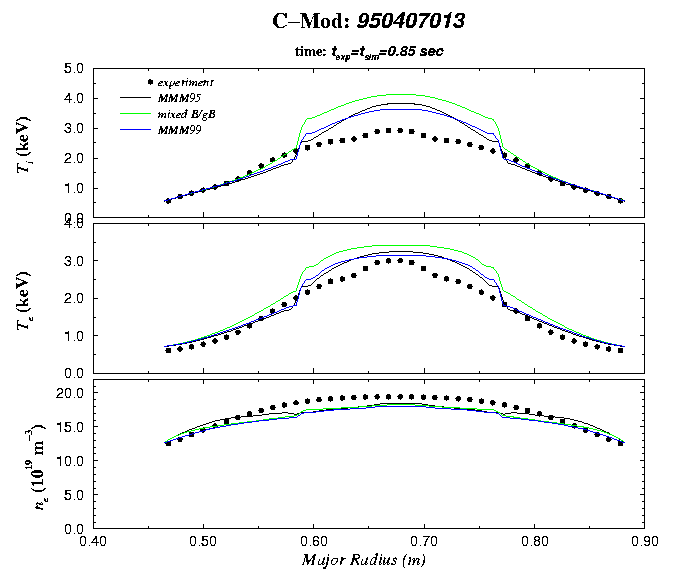
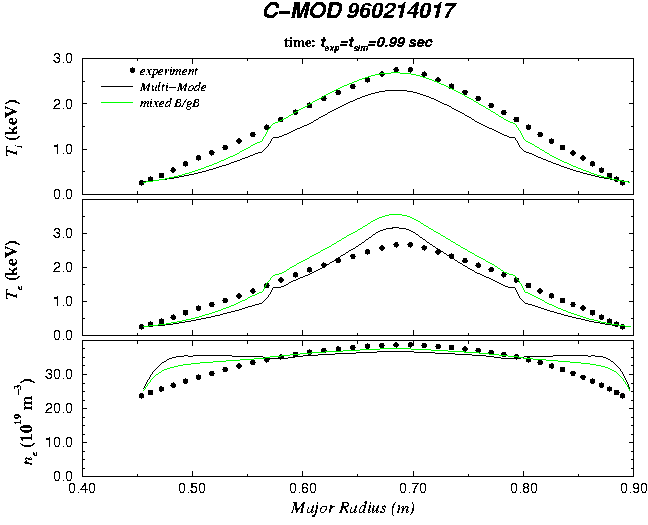
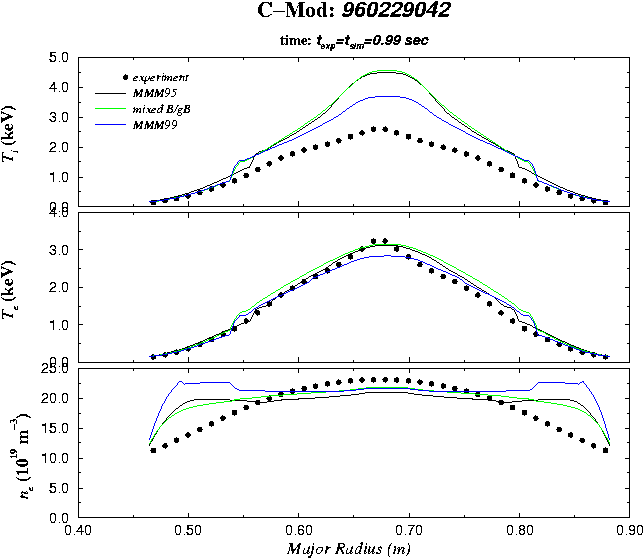

 and
and 


| 960116024 | 960116027 | 960214017 | ||||
| MMM95 | JET | MMM95 | JET | MMM95 | JET | |
|
fne |
0.025 | 0.002 | -0.006 | -0.002 | -0.050 | -0.037 |
| fTe | 0.062 | 0.031 | 0.100 | 0.071 | 0.057 | -0.032 |
| fTi | 0.139 | 0.111 | 0.147 | 0.116 | 0.130 | 0.046 |
| snerel | 0.075 | 0.064 | 0.072 | 0.060 | 0.101 | 0.068 |
| sTerel | 0.045 | 0.030 | 0.115 | 0.041 | 0.096 | 0.102 |
| sTirel | 0.095 | 0.074 | 0.167 | 0.061 | 0.062 | 0.046 |
| 960126007 | 950407013 | 960301009 | 960229042 | |||||
| MMM95 | JET | MMM95 | JET | MMM95 | JET | MMM95 | JET | |
|
fne |
-0.067 | -0.080 | 0.027 | 0.043 | -0.043 | -0.060 | -0.035 | -0.049 |
| fTe | -0.492 | -0.241 | -0.065 | -0.137 | 0.088 | -0.098 | -0.033 | -0.058 |
| fTi | 0.069 | 0.268 | -0.087 | -0.179 | 0.070 | 0.091 | -0.295 | -0.303 |
| snerel | 0.081 | 0.040 | 0.048 | 0.042 | 0.074 | 0.076 | 0.123 | 0.095 |
| sTerel | 0.514 | 0.307 | 0.057 | 0.079 | 0.156 | 0.152 | 0.034 | 0.050 |
| sTirel | 0.048 | 0.178 | 0.145 | 0.195 | 0.042 | 0.049 | 0.253 | 0.265 |